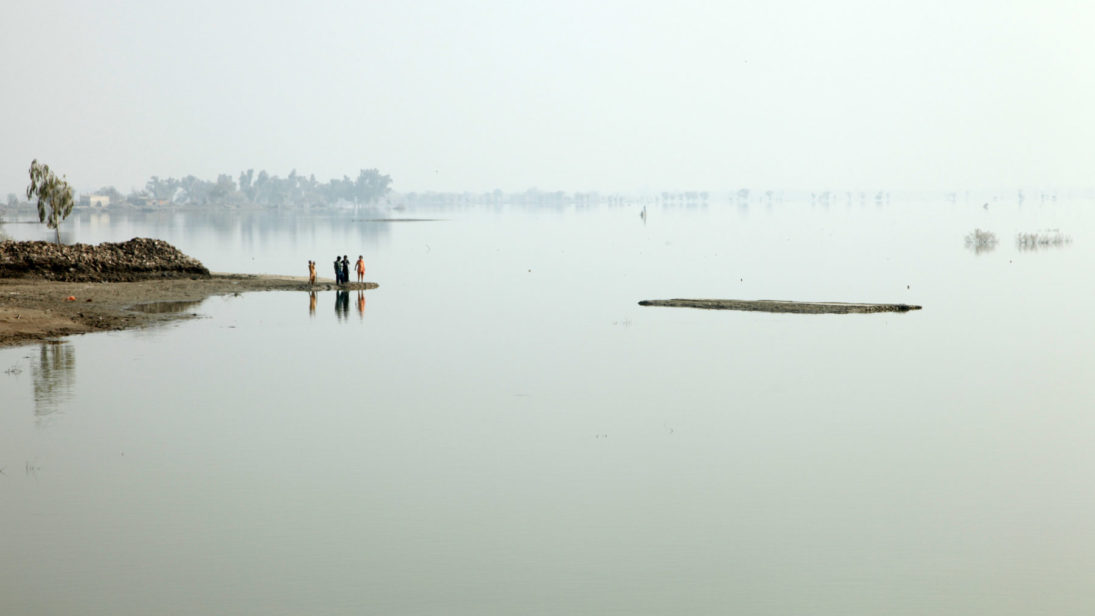
The political world is often preoccupied with questions of war and peace. Policymakers immerse themselves in intangible concepts like order, balance of power, and economic interdependence. South Asian states, particularly Pakistan and India, are no exception in this regard. As such, critical issues that impact the daily lives of their citizens are often ignored. Among these ignored issues, environmental problems linked to climate change and environmental degradation are arguably the most serious. These problems include increased flooding, droughts, cyclones, and other natural disasters, that can and do lead to massive humanitarian crises. As the largest regional powers in South Asia, it is imperative that both India and Pakistan work together on these issues within the framework of the international system as they pose major security threats to the entire region.
In the past decade, South Asia has seen a rise in the number of environmental disasters and people harmed in their wake. Flooding is not unusual in Pakistan, but when one fifth of the country was afflicted in 2010, it was clear this phenomenon was beginning to occur on a much larger scale. According to climate scientists, rising ocean temperatures were a major contributor to these floods. Similar catastrophic flooding occurred in Indian-administered Kashmir in 2014, Uttarakhand in 2013 and other parts of India in 2015. In India alone, heatwaves caused the deaths of 4,620 people in the last four years and a two-week heat wave in 2015 took the lives of 1,250 in Pakistan. A further 330 million people were affected by droughts in 2016.
Outside of India and Pakistan, 17 percent of Bangladesh’s land mass will be submerged by rising sea levels, displacing 18 million people over the next 40 years. In Nepal, 1.7 millimeters of topsoil is eroded each year during the monsoon cycle, negatively impacting the ability to grow crops for sale or sustenance.

A number of political factors in South Asia exacerbate this fragile status quo, including weak institutional mechanisms, a lack of effective coordination and preparedness among relevant agencies, and the absence of accountability. During the 2014 floods in Indian-administered Kashmir, locals were forced to take part in rescue efforts due to a lack of disaster relief resources. Likewise, the Pakistani National Disaster Management Authority has a history of inaction during natural disasters.
Unlike many developed countries, low rates of industrialization and a high reliance on agriculture in South Asia increase the population’s vulnerability to environmental problems. When a state’s economy is vulnerable to external, environmental factors, a country’s security is also negatively impacted. Resource scarcity caused by climate change could particularly deepen tensions between India and Pakistan. For example, Pakistan has accused India of violating the Indus Waters Treaty with the construction of dams that threaten Pakistan’s food and water security. These tensions could lead to armed conflict due to both countries’ dependence on their water resources. Similarly, the ongoing dispute in Kashmir is not only ideological. Kashmir’s rivers supply a billion people with fresh water in both India and Pakistan. As such, conflict over resources could also provide opportunities for the extremists to exploit the situation and increase instability.
Since environmental challenges do not respect international boundaries, this fragile situation calls for strong environmental diplomacy among South Asian states. Bringing these issues to the international stage is an important first step. States should use the South Asian Association for Regional Cooperation’s platform to apply pressure and seek financials support at the international level. For example, South Asian states could add environmental security clauses to their security and trade deals with other countries, particularly the United States. Effective lobbying for these issues by South Asian states at international forums is also necessary as the current Trump administration in the United States does not seem willing to play the required role. Actions like appointing climate change skeptics to key Cabinet positions and withdrawing of the Paris Climate Accord indicates the administration’s reluctance to tackle this issue, even though U.S. action could have a meaningful, positive impact.
There is also a need for better policymaking at the domestic level. Tree planting initiatives can help reduce the impact of global warming as forests reduce excess carbon dioxide in the atmosphere. The provincial government of Khyber Pakhtunkhwa in Pakistan has undertaken such an initiative, promising to plant one billion trees before the completion of their term. Policymakers must also take potential environmental impacts into consideration when making laws and plans for industrialization and development. The public should be better informed about the harmful impacts of environmental degradation, which can be accomplished through educational projects. In regions where illiteracy is high, the media will be an effective tool to increase awareness on environmental issues. Increasing awareness can also increase citizen participation in conservation efforts and citizens will be better able to hold their governmental representatives and other agencies accountable.
It is that time of the year again when heatwaves kill thousands, fears of flooding haunt farmers, and peoples’ livelihoods are impaired by the global rise in temperatures. South Asian governments must create more pressure on international platforms and increase engagement through effective lobbying for environmental causes. Every summer brings more destruction for South Asia, but the situation can still be managed. However, the clock is ticking.
***
Editor’s Note: Click here to read this article in Urdu; click here to read in Hindi
Image 1: DFID via Flickr.
Image 2: Austin Yoder via Flickr.


